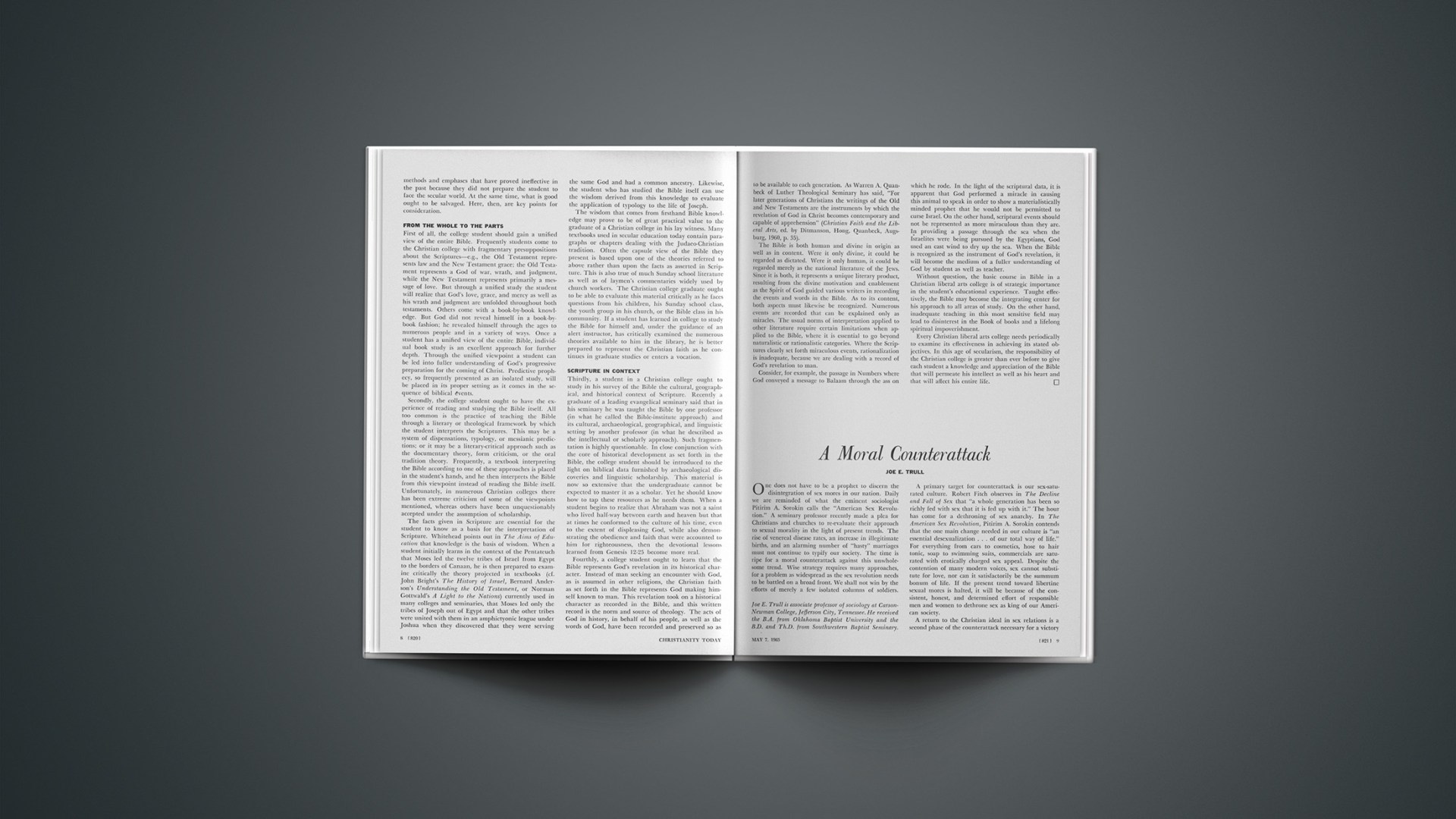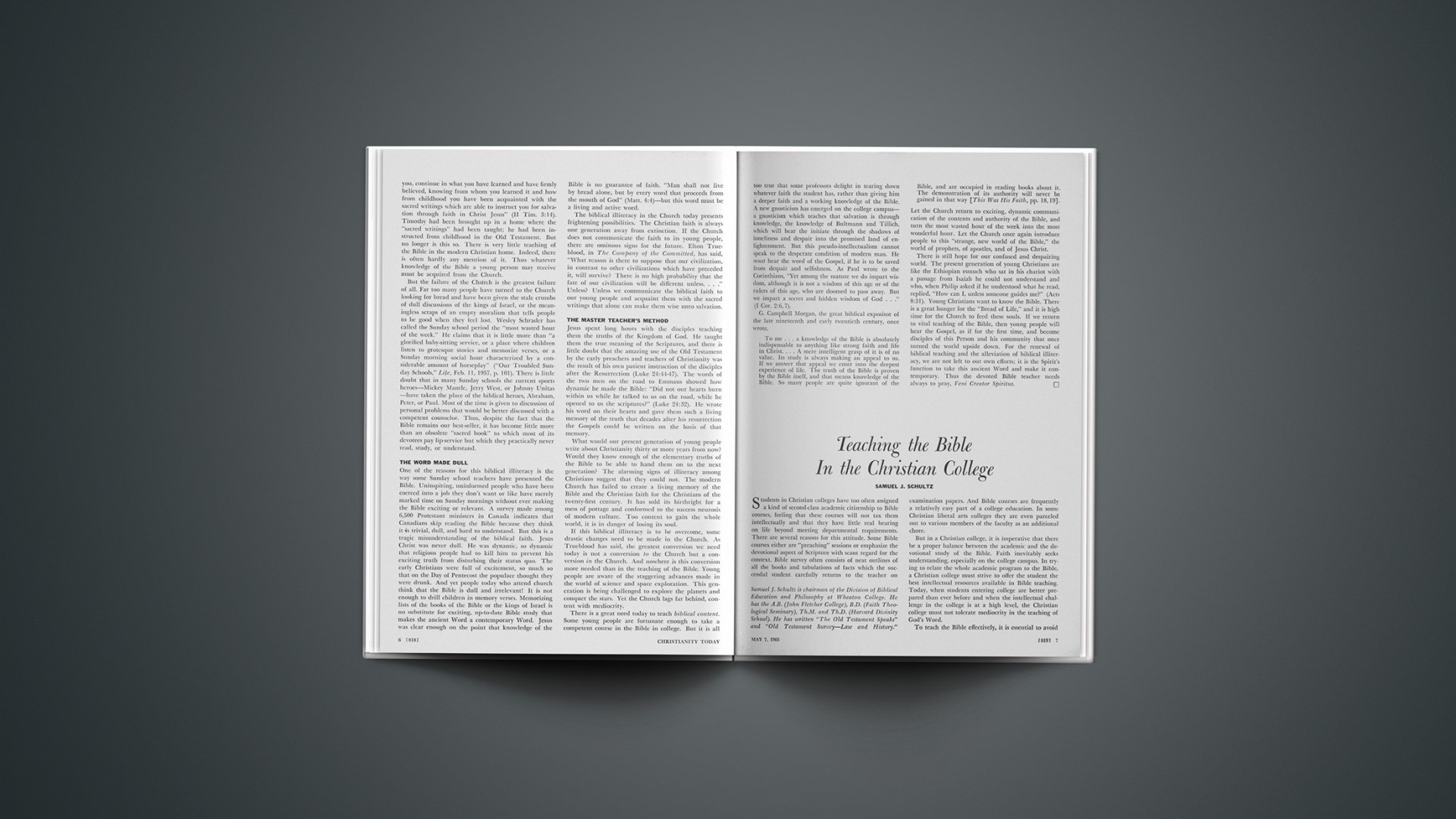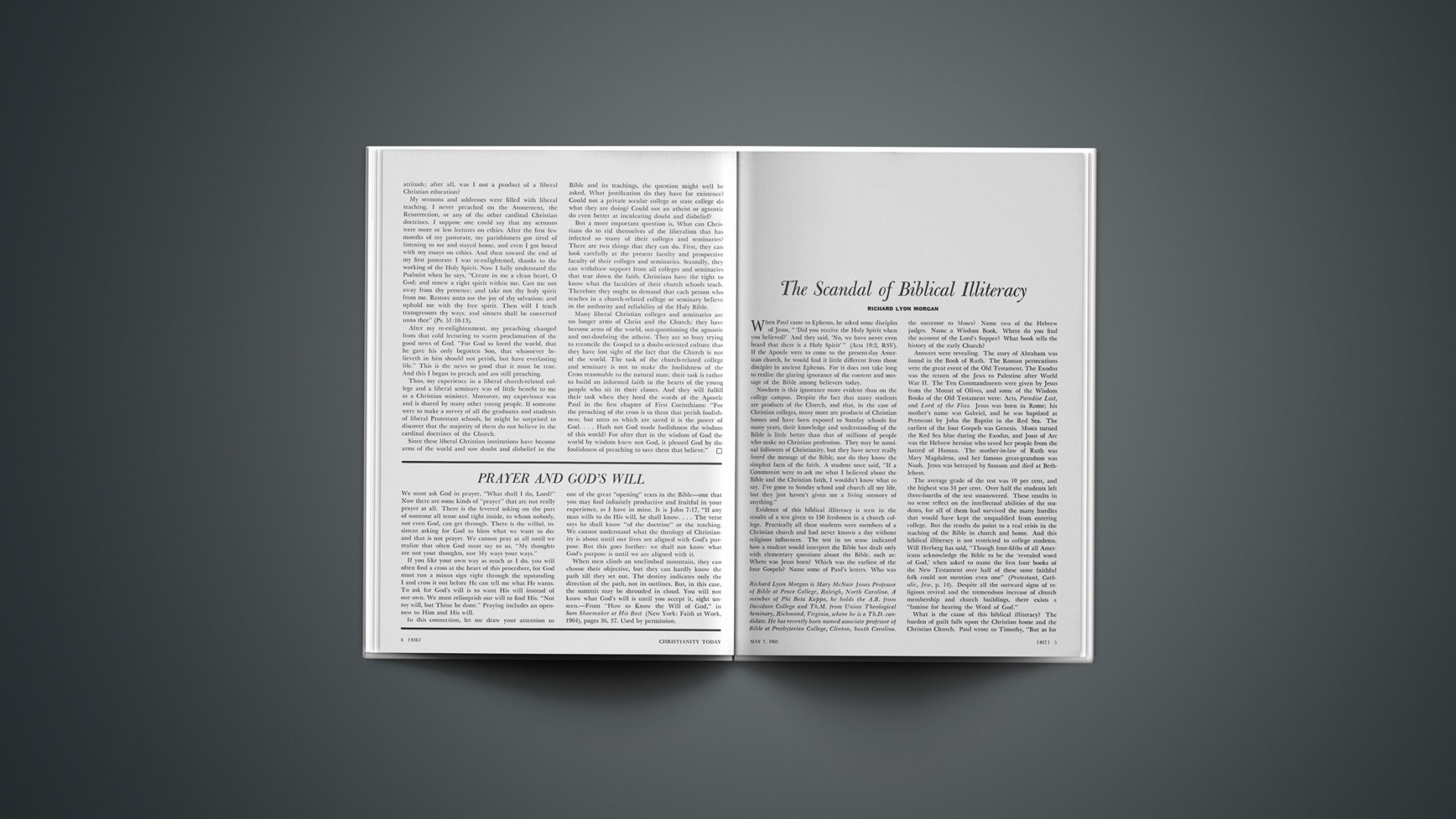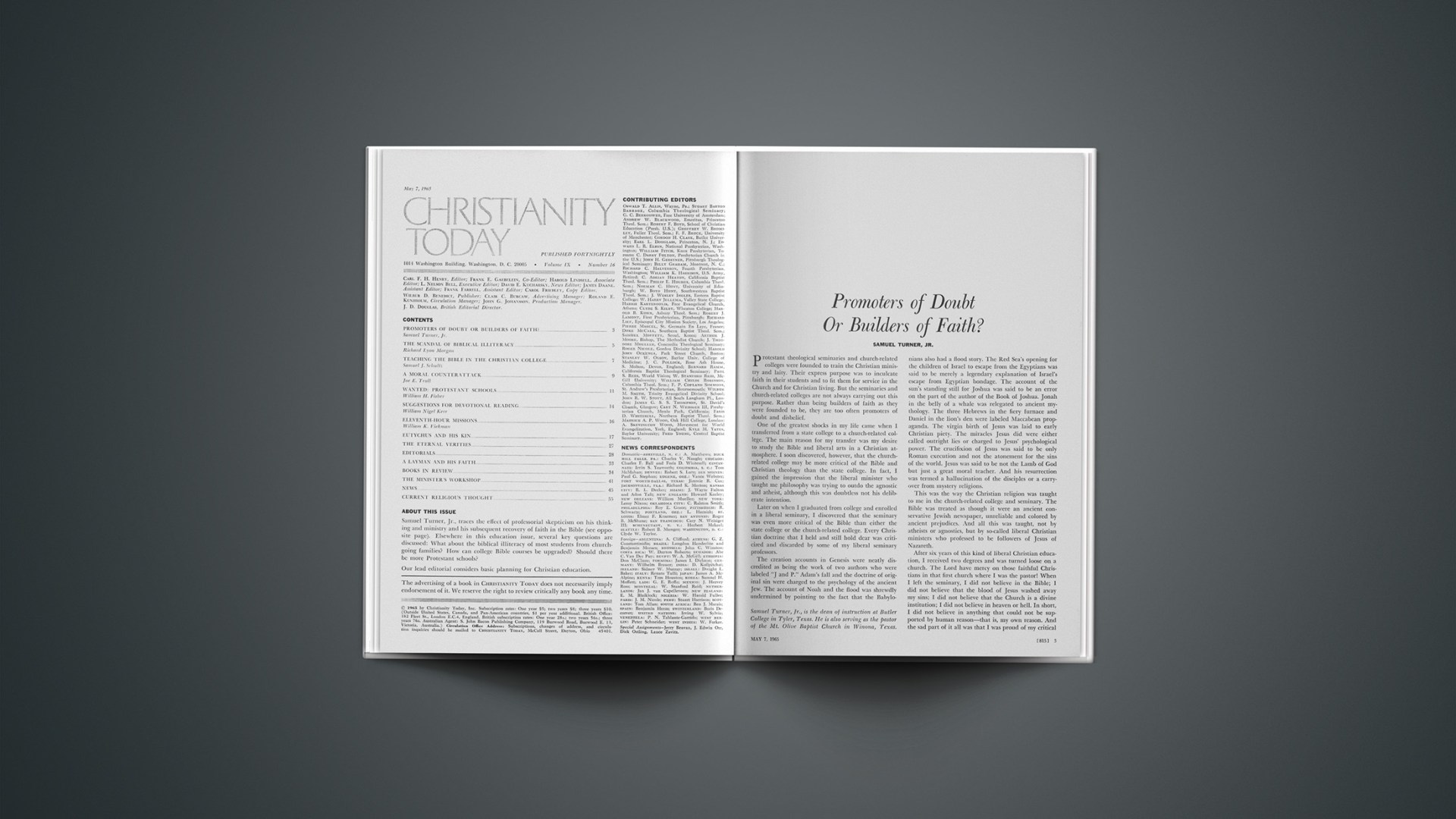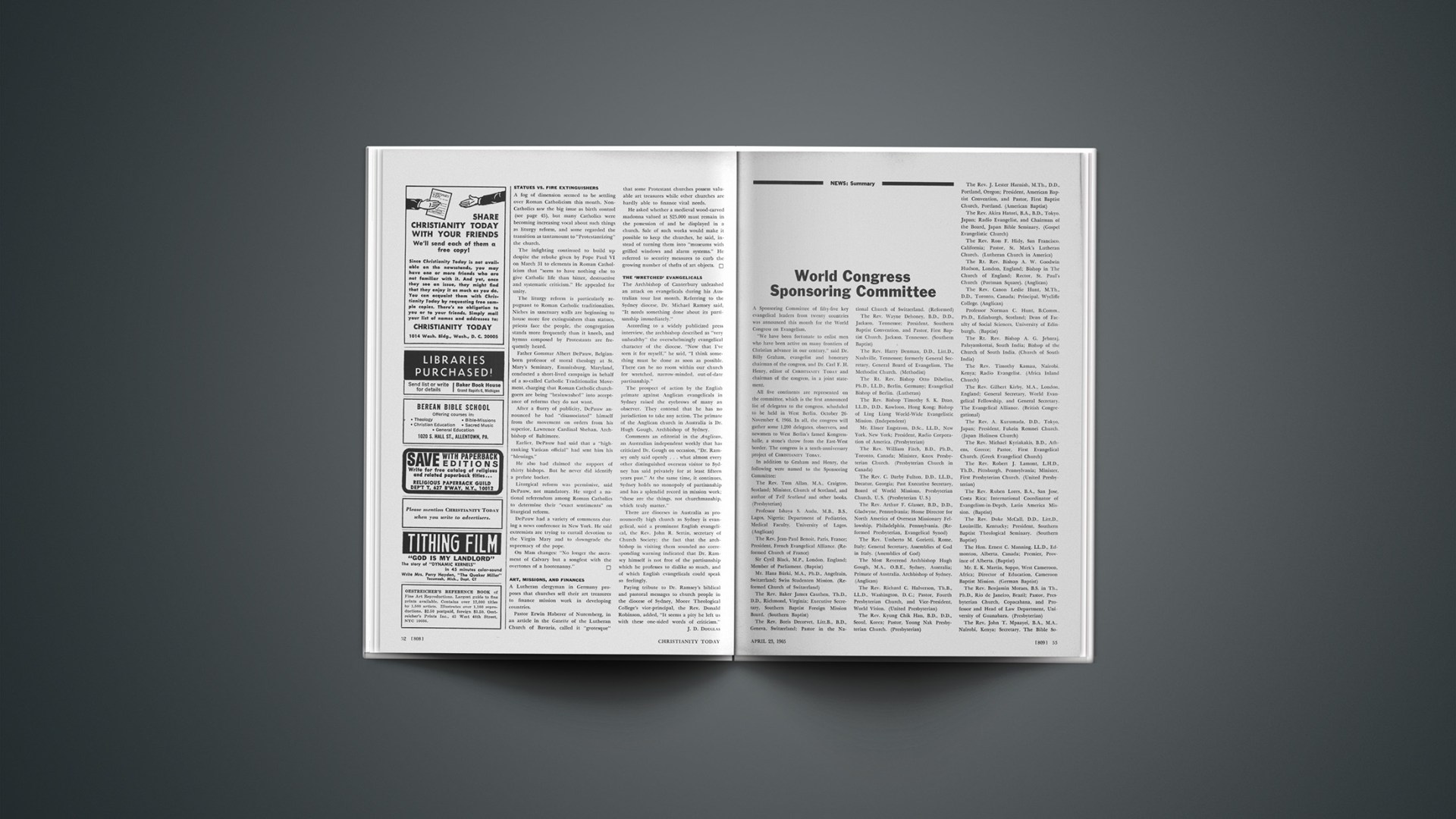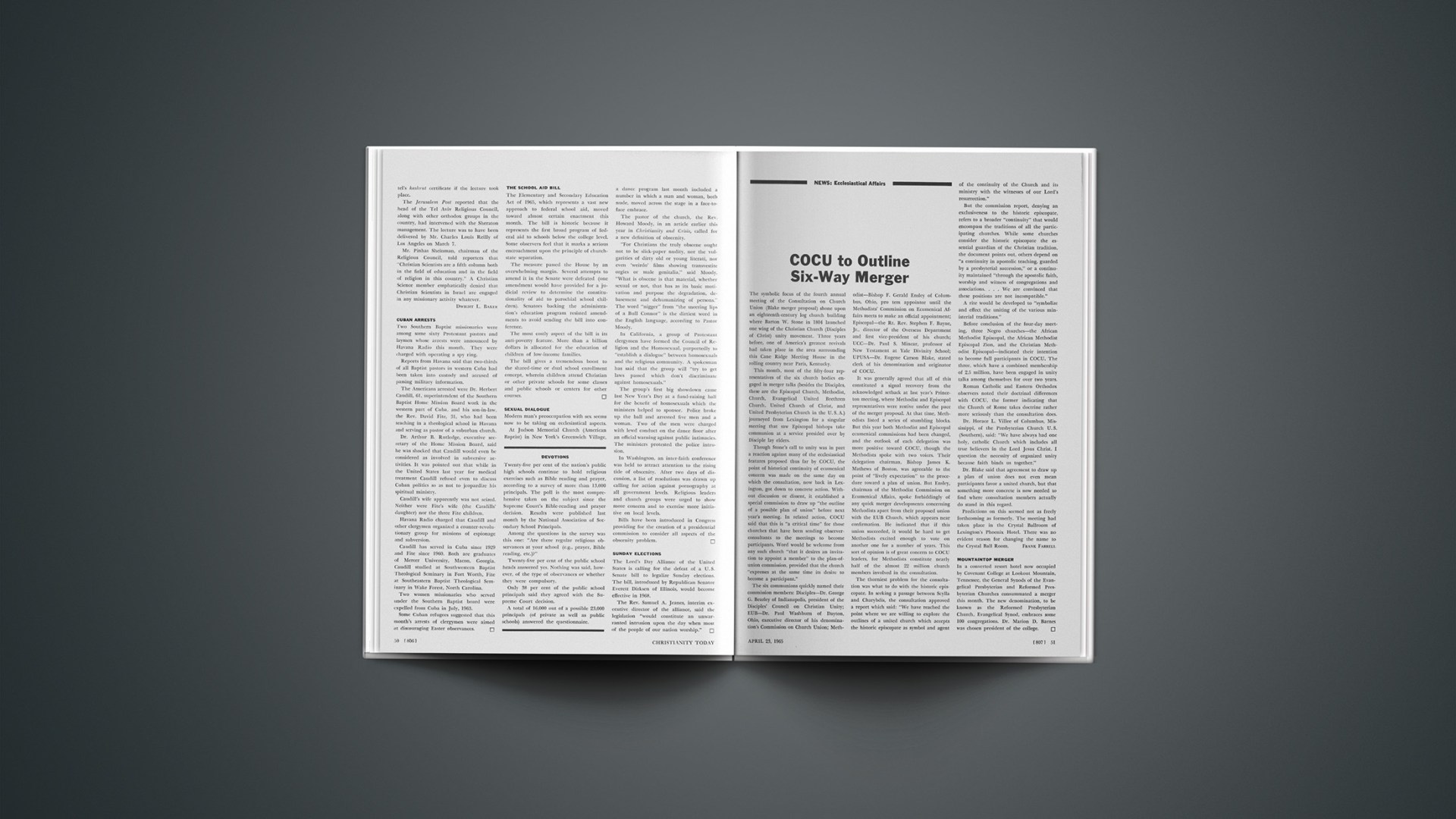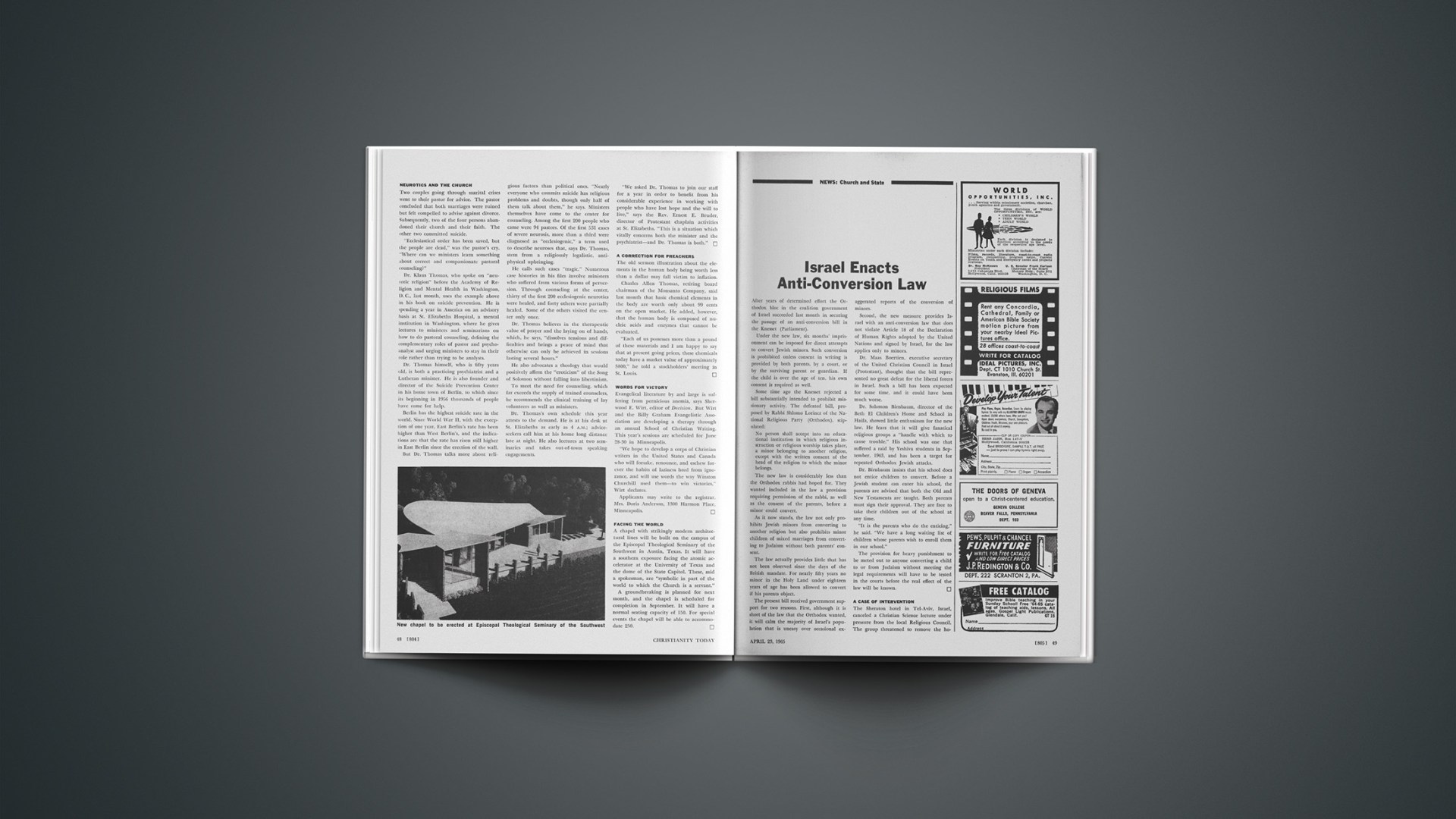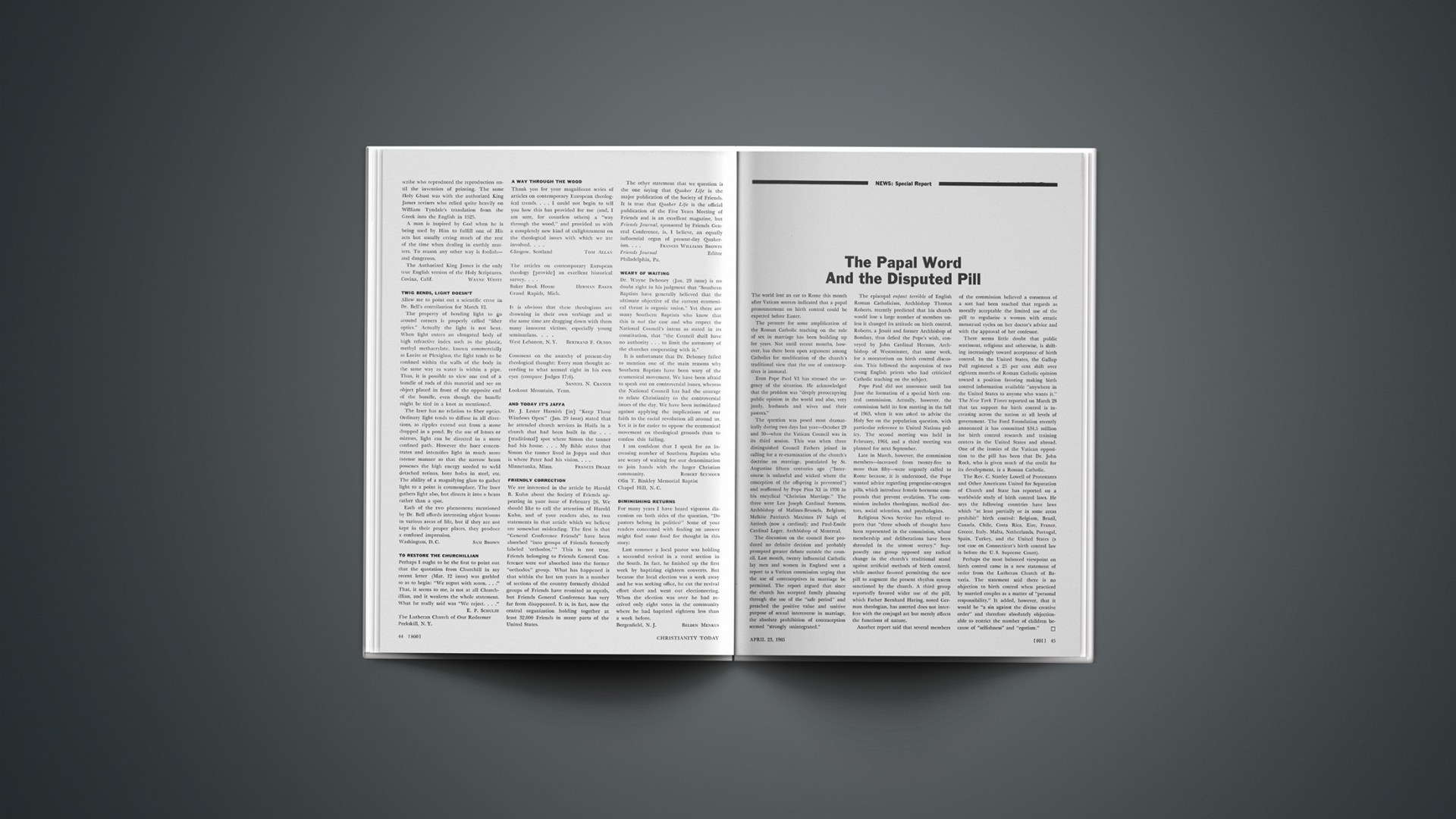One does not have to be a prophet to discern the disintegration of sex mores in our nation. Daily we are reminded of what the eminent sociologist Pitirim A. Sorokin calls the “American Sex Revolution.” A seminary professor recently made a plea for Christians and churches to re-evaluate their approach to sexual morality in the light of present trends. The rise of venereal disease rates, an increase in illegitimate births, and an alarming number of “hasty” marriages must not continue to typify our society. The time is ripe for a moral counterattack against this unwholesome trend. Wise strategy requires many approaches, for a problem as widespread as the sex revolution needs to be battled on a broad front. We shall not win by the efforts of merely a few isolated columns of soldiers.
A primary target for counterattack is our sex-saturated culture. Robert Fitch observes in The Decline and Fall of Sex that “a whole generation has been so richly fed with sex that it is fed up with it.” The hour has come for a dethroning of sex anarchy. In The American Sex Revolution, Pitirim A. Sorokin contends that the one main change needed in our culture is “an essential desexualization … of our total way of life.” For everything from cars to cosmetics, hose to hair tonic, soap to swimming suits, commercials are saturated with erotically charged sex appeal. Despite the contention of many modern voices, sex cannot substitute for love, nor can it satisfactorily be the summum bonum of life. If the present trend toward libertine sexual mores is halted, it will be because of the consistent, honest, and determined effort of responsible men and women to dethrone sex as king of our American society.
A return to the Christian ideal in sex relations is a second phase of the counterattack necessary for a victory in this moral war. The Christian ethic is not out of date. We may have left it, but we have not risen above it. A return to the Christian ideal would require a basic understanding of the biblical revelation. God created man as a sexual creature, giving him an avenue for intimate and personal expression of love sustained by faith in the marriage relation. Theologian W. Norman Pittenger, in The Christian View of Sexual Behavior, has reminded us that man’s sexuality involves dependence and self-giving, a sacred physical relation that anticipates our spiritual relation to God. The Bible nowhere condemns sex as innately evil, but it strongly warns against the dangers of sexual license and promiscuity. Sex is a significant part of life; yet contrary to popular belief, it is not man’s most important possession. The sane Christian interpretation of sex is needed in our land today. Promulgation of the Christian ideal must play a key role in this campaign for Christian morality.
A sound program of sex education is a third area of counterattack. One weakness found in most discussions about sex education is the tendency to limit the instruction almost entirely to the biological facts. If Kinsey is right in characterizing sex as simply “biologic function,” then reproduction information is adequate. But if man is a superorganic creation made in the image of God, then the meaning and purpose of his sexuality must be understood. The primary responsibility for this training rests upon the home. But many parents have failed to assume this responsibility. Couple this with the fact of erroneous or inadequate instruction and one readily sees the need for the involvement of both school and church in sex education.
An adequate program would have a positive approach. The triple fears of conception, infection, and detection have lost their motivating power for modern youth. Young people are well acquainted with modern “protections” and no longer respond to negative injunctions. Although there are dangers to avoid, let us hope our youth can be led to refrain from unwholesome sex conduct because they have aspirations and ideals, a higher life to which they are committed.
The twentieth-century Church has the responsibility of proclaiming a positive Christian theology of sex.
(A church or pastor seriously interested in this approach would profit greatly by referring to one of the finest and most comprehensive works on the subject, Sex and the Church, edited by Oscar Feucht.) An eminent theologian has noted:
The problem of sex is not primarily moral, or biological, but religious in character. Thus our first and most urgent need is that sex and sex life should be discussed in their religious significance [Otto Piper, The Christian Interpretation of Sex, Nisbet and Co., 1942, pp. 105, 106].
Perhaps the Church is in a better position to counterattack the sex revolution than any other institution, because it alone has a religious approach and can deal with the whole person in the whole curriculum of its activities. Thus a thorough Christian interpretation of sex by both parents and social institutions will form a strong battle line in this moral warfare.
Although this final strategy may sound naïve and trite to some modern minds, let it be emphasized that the transformation of the individual is central to this moral counterattack. For any solution to a social problem to be adequate, it must deal with the inner man. The insight of Christ remains valid: “For out of the heart come evil thoughts, murder, adultery, fornication, theft, false witness, slander. These are what defile a man” (Matt. 15:19, 20a, RSV). We must have a radical transformation of our ideas, beliefs, evaluations, emotions, and desires in regard to sex and its place in our total personality and life values.
Prevention of the misuse of sexual love also requires a change in actions. The only way to overcome natural inclinations is through a divine commitment. Jesus knew that man could not fight this or any other moral battle alone. Therefore he declared, “Do not marvel that I said to you, ‘You must be born anew.’ ” What Thomas Chalmers called “the expulsive power of a new affection” will transform a man’s attitudes, actions, and inner self. In Christ the individual can find the moral strength he needs to wage this moral counterattack.
Dr. Ira L. Reiss has sounded the call. Although this noted sociologist and author might not agree with our thesis, it is significant that he recognizes the reality of our solution.
Many factors, such as a resurgence of orthodox religion, could check the trend toward permissive … sexual behavior. But, I believe, along with a number of important religious leaders, such factors will have to become much stronger than they are now to have widespread effect [Ira L. Reiss, “Our Changing Premarital morals,” Coronet, December, 1960, p. 52].
Here then—in regeneration through Jesus Christ—is both our highest hope and our deepest challenge.
Whether we witness the decline and fall of sex anarchy or the decline and fall of the home may well be determined by our response to the call to arms that sounds through the contemporary disintegration of sex mores. A moral counterattack is demanded. The future is in our hands.

